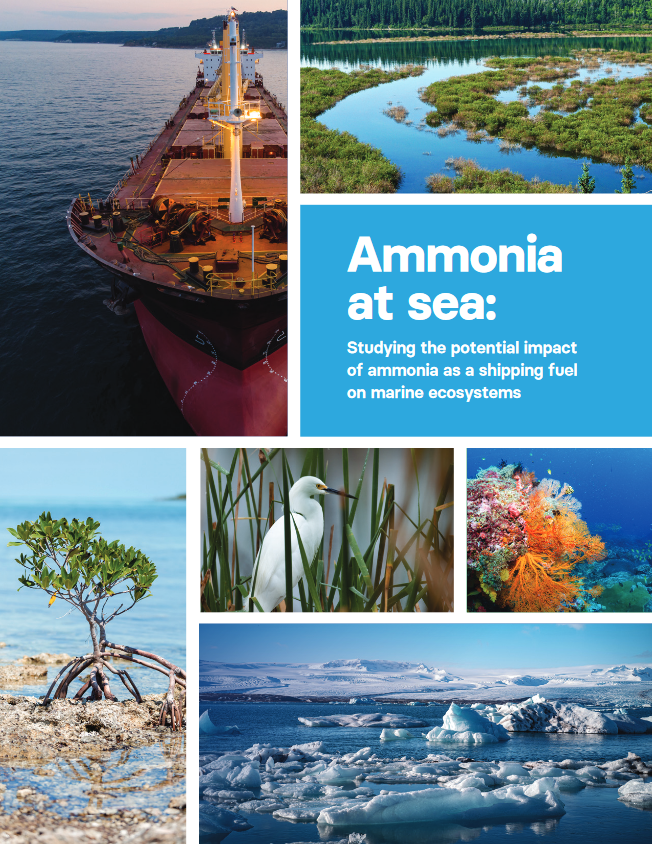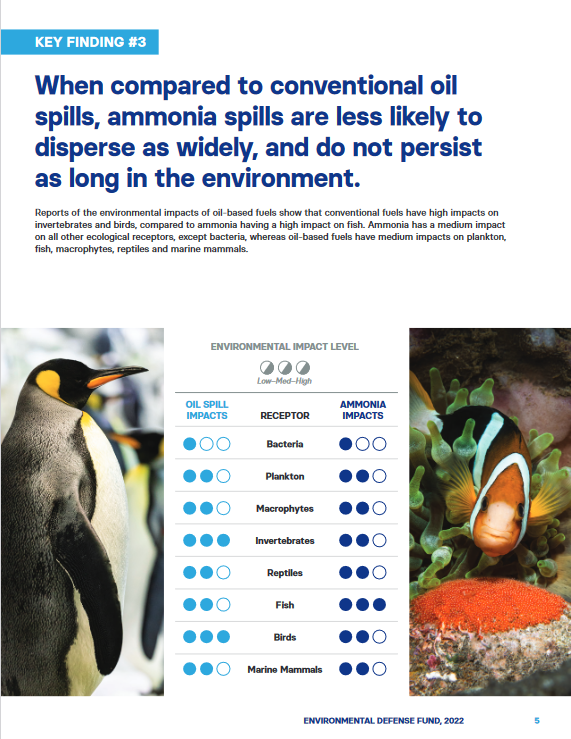New report released on environmental hazards of ammonia spills
By Julian Atchison on December 13, 2022
Ricardo, Lloyd’s Register and the Environmental Defense Fund

The trio have used extensive modeling to assess the environmental impacts of acute, large-scale ammonia spills in a variety of maritime scenarios. The results were compared to previously studied habitat and species sensitivity to conventional oil-based fuels, and possible spill management responses were also considered.
Ammonia spills from a bulker ship, container ship and tanker ship from three hole sizes (2mm, 23mm and 200mm) under different weather conditions were assessed to simulate spills during bunkering. To simulate a loss of ammonia fuel during collision with a container ship, a storage tank with a 1200mm breach was modeled.
The shipping industry must make a rapid energy transition to address the climate emergency. But it is also clear that we must proceed with caution. We owe it to future generations to ensure we are championing true climate solutions that will not negatively impact our rivers, our oceans or our health.
Director of Global Shipping for EDF’s Global Transport team Marie Hubatova in her organisation’s official press release, 18 Nov 2022
You can access pdfs of both the full report and the summary report.
Key finding: highly sensitive environmental settings
The study concluded that estuaries, mangroves and wetlands are all particularly sensitive to potential ammonia fuel spills, especially compared to the polar regions and the deep sea. Within the different settings, fish are most sensitive to ammonia spills, with birds and mammals to a lesser degree.
Ultimately, what we found is that ammonia is more threatening to fish species, and particularly to ecosystems with less saline water and higher temperatures. It is therefore important to study the impact of ammonia carefully for particular regions where these habitats intersect with major shipping channels and ports, such as the Strait of Malacca. The findings of the report provide an excellent step forward to delivering a baseline upon which future assessments can be refined.
Ricardo Senior Consultant (Water and Environment Practice) Lauren Dawson in EDF’s official press release, 18 Nov 2022
Key finding: compared to conventional fuel spills, ammonia less likely to spread & persist

The report also found that an ammonia spill has a relatively smaller dispersion distance and lower persistence within the environment when compared to both heavy fuel oil and maritime gas oil. Previous studies indicate that conventional fuels have higher impacts on invertebrates and birds compared to ammonia, while the opposite is true for fish species.
Key finding: more considerations to work through
While comprehensive, there is a much bigger range of issues that need to be considered for ammonia to be used at-scale as a maritime fuel. The potential health impacts on a ship’s crew, increased nitrogen deposition from ammonia spills or leakage, getting regulatory frameworks right from the beginning and treatment of combustion by-products are all key considerations to be worked through in the future.
All future fuels come with specific challenges. We have been using oil to power ships for almost a century now and we had to learn how to do so in a safe way. We can’t go through the same process with ammonia. We have to make sure we get it right from the very beginning. A robust regulatory framework and good management practices are essential for the safe use of ammonia.
Director of Global Shipping for EDF’s Global Transport team Marie Hubatova in her organisation’s official press release, 18 Nov 2022